Articles
All the latest articles covering the information that you will be craving to devour will be available via this category. From getting to know how indebted our company is to reading about the presidential elections; from knowing about new retirement plans to finding out how security breaches can affect your life; you can browse it all!
For more articles, visit our articles’ section.
Public Sector Retirement, LLC (‘PSR,’ ‘PSRetirement.com’ or the ‘Site’) is a news channel focusing on federal and postal retirement information. Although PSR publishes information believed to be accurate and from authors that have proclaimed themselves as experts in their given field of endeavor but PSR cannot guarantee the accuracy of any such information not can PSR independently verify such professional claims for accuracy. Expressly, PSR disclaims any liability for any inaccuracies written by authors on the Site, makes no claims to the validity of such information. By reading any information provided by June Kirby or other Authors you acknowledge that you have read and agree to be bound by the Terms of Use
Common Thrift Savings Plan Misconceptions by Dave Baker
/by David BakerCommon Thrift Savings Plan Misconceptions
by Dave Baker
David Baker has more than two decades of experience, and as the founder of Retirement Income and Benefits Solutions, is dedicated to helping clients achieve a higher level of confidence in their financial plan. Here Dave Baker will cover the topic of TSP and common misconceptions about the plan.
When it comes to federal retirement, confusing policies and rules have created some Thrift Savings Plan misconceptions. Over the years, it seems as though the lines have blurred a little and a number of TSP misconceptions seen have only increased. In our experience, three main myths should be debunked so this is what we plan to do today. By the end, we hope to have cleared any issues or confusion you may have had!
10% Early Withdrawal Fee
For some time, it has been thought you would be subject to a 10% penalty for making a TSP withdrawal before age of 59 1/2; since this guide is all about myths, we are sure you have guessed this is not entirely true. In fact, there is no fee as an employee if you separate and withdraw in the year you turn 55 years of age; in some special categories, this reduces to 50 years. Unfortunately, people seem to get the TSP confused with Individual Retirement Accounts (IRAs) as the latter does charge penalties for early withdrawal before 59 1/2.
As you may have seen, there can be an early TSP withdrawal fee involved, but it is for those who separate before the year of their 55th birthday (50 for those in the special category). This being said, even avoiding this penalty is common as long as you follow a life expectancy based withdrawal technique (commonly called a 72(t) distribution); this needs to be until you reach 59 1/2 or for five years depending on which is longer.
Roth and Traditional TSPs
Next up, many believe Traditional, and Roth TSPs are separated completely and therefore provide two different accounts. Once again, this is not true; although they show as two different balances, they belong to one single TSP account. For many, this causes issues because withdrawals need to be made proportionally whenever an account holds Traditional (pre-tax) and Roth (post-tax) balances. Unfortunately, withdrawing from just one of the two is not an option.
IRA Contributions
Finally, can you contribute to an IRA as well as fully funding the TSP? In short, yes. In premise, IRAs and TSPs are the same because they allow you to save for retirement but in reality, they are entirely different from one another since only one is sponsored by your employer – an IRA is an individual plan. If you have previously given into this misconception and failed to invest in an IRA, you could have been putting away an extra $5,500 every single year. With this in mind, absolutely anyone can put money into a Traditional Non-Deductible IRA with the restrictions in place on deducting contributions to a Traditional IRA and even Roth IRA contributions full-stop.
For us, these are three huge misconceptions, and they have the potential to change the way in which you invest and keep your money. Therefore, feel free to share this information around to your colleagues, and all other federal employees and hopefully we can reduce the number of Thrift Savings Plan Misconceptions that exist.

Contact Dave Baker
(734) 794-2775
Other Dave Baker Articles:
FAQ Regarding New TSP Investment
/by Ron RaffinoFAQ Regarding New TSP Investment Options by Ron Raffino
For all federal workers, there have been many questions making their way to the surface in recent weeks with regards to TSP investment options, TSP Withdrawal options and what is being called the TSP Investment Window. However, there is one that seems to be dominating; ‘when will these investment choices be available for the TSP?’. Therefore, it is time to provide a full answer so keep reading if you need to know!
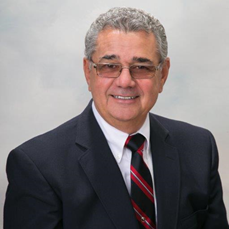
If you were unaware, TSP stands for Thrifts Savings Plan, and it is essentially a program for all federal employees styled much like a 401(k). In total, five different funds are reflecting the different bond and stock markets. In 2019, tracking international stocks (one of the five) will expand to include Canada and many other emerging markets, and this is perhaps the biggest change in the recent announcement.
Furthermore, another change will be seen with the ‘lifecycle’ funds and withdrawal dates have been released offering 2020, 2030, 2040, and 2050. Ultimately, these funds combine basic fund investments with different ratios and, as time passes, they become more conservative. When 2020 arrives, the TSP will start to offer five-year increments with funds (ending in 2065) as all funds with the date merge with current income funds.
Elsewhere, the TSP is also looking to add flexibility to investing through what they are calling an ‘investment window.’ Rather than being restricted by investments, they want to allow all account holders to invest in actively managed mutual funds as well as various other funds rather than just those they offer already.
Finally, Congress has recently received potential bills to add more options when it comes to withdrawing. In particular, they should help those aged 59 1/2 and above (as long as they are still employed).
There we have it, the expected changes in the coming years and when they will make an appearance. According to all involved, these changes will bring the TSP into the 21st century and level with other retirement savings programs currently available in the market.
About The Author: Ron Raffino
Ron Raffino is a lifelong resident of Newark, New Jersey, Ron specializes in Federal Benefits and Education Retirement plans. Mr. Raffino helps individuals maximize the benefits earned during their working years. As retirees enter into the ‘golden years,’ the government systems in place are difficult to comprehend for the former employees. Constant changes can be overwhelming.
As a retirement specialist, Ron enjoys personal fulfillment planning for the security and growth of a client’s funds. Fishing, hunting, camping, and hiking are endeavors that Ron also enjoys participating in, along with his family which is another priority alongside his clients. With the utmost consideration, Ron revels in the opportunity to assist you with any and all financial inquiries or needs. Let’s plan your future together!
Changes to the Thrift Savings Plan by Don Fletcher
/by Denise SpindlerChanges to the Thrift Savings Plan
By Don Fletcher
Don Fletcher helps Federal Employees protect their retirement money by assisting them in putting together their Personal Retirement Plan. Wealth preservation and financial security, when looking at retirement planning, is key for Don and his clients.
In a statement from the Thrift Savings Plan governing board, they announced changes to both the international stock I Fund as well as L Funds. Essentially, the number of L Funds will be changing in around three years’ time, and there will be alterations to how the I Fund is made up although there isn’t a timescale on this change just yet.
I Fund – Ultimately, the recommendation to change the Thrift Savings Plan I Fund came from a consultant and the board then approved the change soon after. Currently, the fund itself is a reflection of an index monitoring the stocks of the largest companies across a whole host of countries. Although most companies come from the Western world and the Far East, a quarter of the value is now held by Japan. Within Europe, United Kingdom holds the largest share with one-fifth while one-tenth each comes from Switzerland, Australia, France, and Germany.
When the changes finally come into effect, the I Fund will be expanded dramatically regarding the number of countries reflected. For example, Canada will be added as will the stocks of developing countries and small-company international stocks.
Why? – Ultimately, the board wants to make the fund more diversified. Instead of just considering the largest countries in the world, they want the fund to reflect the international scene more accurately. As mentioned, there isn’t yet an introductory date for this, and this is likely to be because the finer details are yet to be revealed. For the change to work successfully, there would need to be a smooth introductory plan to prevent major issues and potential embarrassment.
L Fund – With L Funds, there is a timescale in place, and we are expecting the addition of TSP lifecycle funds in 2020. In this year, it is expected the Income fund will have the same type of standing as the L Fund which will see the two merge. With this, investments will be mixed with C, F, G, I, and S Funds. Once the projected withdrawal date comes nearer, the mixes become more conservative. In addition to this, we will also see the addition of funds for 2025, 2035, 2045, 2055, 2060, and 2065.
Once again, it was the recommendation of a consultant which led to this change. Within the recommendation, they stated that increments of five years were the standard choice within the industry for mutual funds. Interestingly, there was also research into potential funds that could track real estate investment trusts, hedge funds, high-yield bonds, and other industry sectors specifically. However, results were not quite as expected and the consultant eventually withdrew their interest and advised the Thrift Savings Plan board against it.
There we have it, two major changes coming to the Thrift Savings Plan and one each for the I Fund and L Fund. In the next couple of years, everything will remain as normal, but you should be ready for the changes as they come. For example, the L Fund changes are due in 2020 while the finer details of the I Fund changes still have to be calculated. If this will affect you in the coming years, please feel free to talk to a financial professional who can help take the right action both now and long into the future!
Contact Don Fletcher
Don Fletcher
Article: Why it’s Wise to Front-Load Your TSP Before Leaving A Job by Don Fletcher
The Correct Way of Saving for Retirement by Carol Singer
/by Carol SingerMany Americans are saving for retirement in the wrong type of investment vehicle such as low-yielding personal savings accounts that don’t offer any special tax benefits. A 2016 retirement benefits savings survey by NerdWallet found that 55% of those saving for retirement do so in a regular (taxable) savings account. For millennials between the ages of 18 and 34, the rate jumps to 63%.
With the goal of retirement in mind, there is an overwhelming variety of retirement programs to choose from. You may be asking yourself which is the most appropriate for your circumstances? What are the ramifications of not saving in a tax-friendly retirement account?

Time to Prioritize
Federal employees have access to the Thrift Savings Program (TSP) as part of the federal benefits package. The TSP offers federal employees the same type of savings and tax benefits that many private corporations offer their employees under “401(k)” plans. As a federal employee, your first priority when saving for retirement is to ensure that you are enrolled and maximizing contributions to your TSP. Unless you are taking full advantage of your Agency’s TSP matching contribution then you are passing up free money, a decision that is never advisable.
By contributing just 5% of your salary to your TSP you are eligible for the government’s full match of an additional 5% of your salary. Automatically this brings your saving rate from 5% to 10%, which is a quicker path to retirement. Contributing less than 5% not only means that you are giving up matching funds but you are also compromising the possibility of a comfortable retirement
Tax Benefits Matter
In the event that your current financial situation does not afford you the ability to immediately increase your TSP contribution to the target rate of 5%, even contributing a lesser amount still provides you with an attractive tax break. As your finances improve and you climb the pay scale ladder, dedicate to steadily increasing your contribution amount until you achieve and hopefully exceed the 5% target.
Contributions to a Traditional TSP are taken out of your wages before they are taxed, which reduces your taxable income and in return reduces your income tax liability. For instance, if your annual salary is $60,000 and you contribute $6,000 to your TSP, your taxable income would be reduced to $54,000.
In addition to the matching contributions from your Agency, an important benefit of a Traditional TSP is the deferral of taxes on any investment gains that are generated within the account until you actually retire and begin withdrawals. In contrast, in an ordinary personal savings or brokerage account, the gains and dividends will be taxed in the year they are realized, and that can hinder the growth of your portfolio.
The Roth TSP
If you are already maximizing your TSP contributions, anticipating a higher tax bracket during retirement or planning to pass on a large share of your retirement assets to your heirs, then you may want to consider allocating all or a portion of your TSP contributions to a Roth TSP. Both the Traditional and Roth TSP are tax advantaged; they just offer that advantage differently.
Whereas a Traditional TSP which is funded with pre-tax dollars and grows tax-deferred until you begin withdrawing it; Roth TSP contributions are deducted from after-tax income. Earnings grow tax-free, and there are no taxes to be paid for qualified withdrawals. Roth TSP withdrawals are considered qualified if five years have passed since January 1 of the year you made your first Roth contribution, and you are age 59½ or older, permanently disabled, or deceased. If your withdrawals are not qualified, the portion of your withdrawals that are due to earnings will be taxable and could be subject to a penalty if you are not 59½ or older.
Longer Life, Longer Retirement
Life expectancies are increasing every year. The Social Security Administration anticipates that the average man reaching age 65 today can expect to live until 84.3. The average woman reaching age 65 can expect to see her 86th birthday. Even more surprising is that one in four 65-year-olds will live to age 90, while one in 10 will live past 95.
In contrast to a TSP, personal savings accounts do not earn a high enough rate of return to provide for a secure retirement. For many Americans, their nest egg will need to supplement a retirement that can span 20 or even 30 years.
With the potential for a long retirement ahead, achieving the right mix of investments is another key piece to the retirement planning puzzle. Based upon current rates, when using a personal savings account or certificate of deposit (CD) for retirement planning you are unlikely to achieve much more than a 1% return. A conservative bond portfolio may only result in a 3% or 4% average annual return. But by diversifying your portfolio to include stocks you may see a 6% average annual return.
By investing in your TSP you have access to a selection of TSP funds that offer broad market diversification. You can choose to invest your retirement dollars as conservatively or aggressively as your risk tolerance and time horizon dictates. While the difference between a 3% and 6% annual return may sound small, it could equate to thousands of dollars in annual retirement income.
Bottom Line
Since it’s introduction in 1986, the Thrift Savings Plan (TSP) has proven to be a valuable retirement program for federal employees. Choosing the right retirement savings vehicle for you and ensuring that you receive all the tax benefits the right plan can provide starts with a complete analysis of your federal benefits package by contacting a PSR specialist.

Contact Carol
Phone: 505.310.1474
Email: [email protected]
Other Carol Singer Articles
Obtaining the Best Federal Employee Life Insurance by Carol Singer
Is FEGLI Right For You, Right Now? By Carol Singer
Five Key Steps Towards Federal Retirement and Financial Security by Carol Singer
Five Key Steps Towards Federal Retirement and Financial Security by Carol Singer
/by Carol SingerFive Key Steps Towards Federal Retirement and Financial Security
by Carol Singer
If you’re concerned with your Federal Retirement and financial security you may want to look into the social security administration’s “National social security month” to learn more about the benefits of social security and your thrift savings plan. These plans can be applied to the federal employees & retirees.

Steps To Help You With Your Federal Retirement and Financial Security
Step 1:
The crucial step towards keeping maximizing your social security is to first understand how social security works. Understand that Social Security is not just simple as it might looks and that there are thousands of potential claiming solutions that you could elect. Once you understand the different ways you can claim your Social Security benefits and how that might be impacted by other income source (like your TSP and the therefore impacted by potential taxes on your TSP Withdrawals) you will be able to make a more informed decision.
Step 2:
Performing verification is the next crucial step to do under the mySocialSecurity account. Assuming that the Social Security Administration has an accurate record of your earnings could cause you to lose out on some of your benefits; you should check the earning record inside the statement of your account.
Step 3:
The Social Security Administration suggests that estimating your social security benefits with the help of using their calculators/tools under the My Social Security Account section can be beneficial for you. Using these estimates along with tsp considerations and thrift saving withdrawals options can be a major step toward finding the perfect solution to maximizing what you will receive from your FERS / CSRS Annuities, TSP and Social Security combined.
At the same time, you can calculate how much you are entitled to receive social security benefits at different ages. You should be careful with the words like “on average” & “approximately” as most of the federal employees earn more than the average wage earner. According to the data received from the Bureau of Labor, the average salary of US workers in the year 2016 was $44K. This is because the formula used by many retirees for the calculation of SS benefits replaces the major percentile of higher earners with the low wage earners.
Step 4:
The next consideration is to apply for your security benefits online. Online applications are easy to complete & are readily available. The representatives will call you to help you out with your doubts related to social security. At the same time, you have to mention the amount withheld inside the remarks section of the application from as current online application doesn’t address the federal income tax withholding. This can be achieved if you want to have your money withheld for taxes. Apart from that, if you are applying for the social security schemes after the attainment of perfect age for retirement, then you should indicate whether or not you want to receive the six months of retroactive benefits in place of remarks section.
Step 5:
The fifth & final step regarding your social security is to manage your benefits with the help of online tools or with the help of your personal mySocialSecurity Account.
Conclusion
Your social security retirement benefits will be based on your earnings history and inflation-indexed calculations. Your thrift savings plans and your social security benefits will impact one another as income from either source could cause the other to be taxed at a higher rate. You should carefully weigh the various social security claiming options along with thrift savings plan withdrawals options. At the same time, you should not forget your taxes on your TSP funds & all other TSP considerations while having the social security benefits.

Contact Carol:
Phone: 505.310.1474
Email: [email protected]
Other Carol Singer Articles
Obtaining the Best Federal Employee Life Insurance by Carol Singer
The Correct Way of Saving for Retirement by Carol Singer
Is FEGLI Right For You, Right Now? By Carol Singer
Special Category Employees and Retirement Benefit Differences
/by Matt PierceFederal Retirement benefits are not always the same for every employee. If you are considered a Special Category employee, there are some distinguishable rules that you should be aware of. The categories that fall in this domain include the firefighters, law enforcement officers, and the air traffic controllers.
Retirement benefits differ for Special Category employees:
The firefighters and the law enforcing officers can retire if they are 50 years old or more. Of course, another condition in this regard would be the completion of 20 years of service. The retirement age that is mandatory for everyone is 57, and it’s only when an agency’s head thinks that it’s wise to continue can the age go up to around 60.
The main reason behind the difference in the retirement benefits is the fact that the careers of these Special Category employees last much shorter than the average employees. For example, the CSRS annuity can be calculated by taking 2.5 percent of the high-3 average pay and multiplying the answer with the 20 years of service. Follow the process by taking 2 percent of the high-3 times if there remain any years of service unaccounted for.
To calculate the FERS annuity, you will have to consider 1.7 percent of the high-3 average pay and whatever answer comes needs to be multiplied by 20 years of service. Similarly, take 1 percent of any of the remaining years of service.
The careers of the special category employees are filled with meeting and tackling situations that normal employees would never have to face, so it’s only natural for them to expect a little more compensation when it comes to getting Retirement benefits. There are other worth mentioning differences too, and they all contribute towards the effort to make the post-retirement lives of special category employees easy and comfortable.
Fed Interest Rate Hike and TSP Growth
/by Matt PierceEconomic growth has triggered a Fed Interest Rate Hike and TSP Growth coincides. Since the start of 2017, the US economic data has steadily improved, and the Federal Reserve is raising rates as a result. A steady increase in the financial data is demonstrating a sound reason for higher rates. The increased economic activity is also helping the government pave the way for continued increases in the interest rates. The Federal Reserve rates had been predominantly stagnant over the past decade, and this rate hike may be something that suggests more ‘Interest Rate Normalization.’
Fed Interest Rate Hike and TSP Growth
Since the November election, there have been a solid number of new jobs and an overt acceptance by much of corporate America that the future under Trump looks rather bright. Corporate America’s excitement about prospects may prove to be a great sign for the federal government.
This increase in jobs and economic data has caused the Federal Reserve to raise rates in recognition that the economy needs less help under Trump to achieve the desired 2% target growth. Federal employees who are investing in their Thrift Savings Plan have likely seen a rather sharp increase in their account values due to the market’s run-up since the election. Wednesday’s rate hike, which in decades past has typically been seen as a negative to the potential of the market were met with near record-high closes for the DOW, S&P, and NASDAQ.
To be able to see a higher rate bias from the Fed finally is something that has brought smiles on the faces of many people – especially fixed income savers. Here’s hoping that the rate increases lead to a more normal interest rate market and that that market brings about ongoing economic expansion.
Planning for Retirement in Five Years by Ron Raffino
/by Ron RaffinoTips from Ron Raffino for Those Planning on Retiring in Five Years

You must have heard that it’s never too late to start planning, but have you heard it’s never too early to start planning? In fact, the earlier you start your retirement planning, the better it will be for you. Retirement planning is no joke as a lot of factors need to be considered carefully. We will advise you take some assistance from your local personnel service center. Since they have your employment records, they are in a position to provide you with personalized assistance.
We all know and understand that health and life insurance are of top most priorities but still, we see a lot of retired personnel without proper coverage. This usually happens because of lack of awareness and lack of knowledge. It must be noted here that in order to carry the coverage forward, one must be covered continuously for five years before retirement.
Help from your employer
You can get all the information you need on the retirement process from your agency. It should be noted here that the agency only provides you with the information. In order to interpret it and get advice on what to do, you should contact your local personnel service center. As they have your employment records, they are in a better position to advise you on such matters.
When to start planning
This is an important question. We hear a lot of employees asking this question – when should I start planning. Well, to be honest, it’s better to start as early as possible. But just in case if you haven’t done it then make sure you start planning at least five years before retirement. We advise you to start planning five years prior to your retirement as you must have insurance coverage for five years immediately before retirement to keep it after retirement.
Keeping your health insurance benefits after you retire
Pay close attention to this part. Following are points that specify the conditions for being eligible to continue your health insurance coverage.
- You must be covered at the time of retirement.
- Your coverage must not fall under the category of converted individual policies.
- The date of issuance of the first annuity check must not be later than 30 days after the retirement.
- Prior to 5 years of the date of retirement, you must have continuous coverage.
You can also avail the benefits of optional life insurance if at the time of retirement you are eligible to continue your basic coverage, and again if you were continuously covered for a period of 5 years before your retirement date.
Waiver of the requirement for continuing life insurance coverage into retirement
Currently, there is no such provision that allows a retirement employee to bypass the stipulated conditions for continuing life insurance coverage. However, if you do find yourself in such a situation then you always have the chance to migrate to an individual policy.
Review your service history
As someone who is about to retire, it’s always a good idea to review your service history. You can find all the information in the Official Personnel Folder (OPF). The purpose of such a review is to make sure that all your service records are valid and verified. If you encounter a situation where some of the records are missing then you must report it to your employer. Your employer can help you to find the missing records and document them properly. Some employees are required to make retirement contributions. You can enquire about the consequences of payment or nonpayment of such contributions from your employer.
A complication can arise if you haven’t made payment for receiving the military credits (only if you have served in the military). Such payments are to be made before you retire. You can also get advice from the Personnel Officer on waving the military retired pay.
Check your eligibility for Social Security benefits
In order to check for your eligibility to receive social security benefits, you need to visit your local Social Security Office. After you fill and submit the form SSA-7004-PC, you will be provided with a benefit estimate statement. This statement will contain all the information your future eligibility for Social Security benefits and estimates of these benefits at specified dates.
Government Pension Offset
In some cases, it has happened that the social security benefits of a retiring employee’s spouse saw some kind of offset. This mostly happens when the pension of the retired employees is not covered by social security. In such cases, there is no offset on the social security benefits of the retired employee; it happens only to the social security benefits of the retired employee’s spouse. This offset amounts to two third of the federal pension.
Such an offset does not apply universally. There are some exceptions. For example, those employees who are covered by the Federal Employees Retirement System (FERS), Civil Service Retirement System (CSRS) Offset, and those who voluntarily took transfers to the FERS before January 1988, are exempted from the Government Pension Offset.
Windfall Elimination Provision
Windfall Elimination Provision reduces the Primary Insurance Amount (PIA) of a person’s Retirement Insurance Benefits (RIB) or Disability Insurance Benefits (DIB) when that person is eligible or entitled to a pension based on a job which did not contribute to the Social Security Trust Fund. While in effect, it also affects the benefits of others claiming on the same social security record.
The Windfall Elimination Provision does not apply if:
The WEP is applied to certain beneficiaries who are receiving RIB or DIB and who also:
- The beneficiary becomes entitled to the benefits after 1985
- The beneficiary also first becomes eligible, after 1985, for a pension based in any way upon earnings from employment that was not covered by social security
- The beneficiary’s entitlement to this pension has not yet ended (even if not yet claimed)
- The beneficiary is still alive
- The beneficiary has not obtained 30 Years of Coverage (YOCs) at the age of 62 years.
Estimating the amount of the Windfall Elimination Provision reduction
At your request, using the form SSA-7004, the Social Security Administration will send you a Personal Earnings and Benefits Statement (PEBES) that will list your earnings from employment covered by Social Security and provide a Social Security benefit estimate assuming retirement at alternative ages, 62, 65, and 70. You should contact your local Social Security office (external link) to determine the effect of the Government Pension Offset and the Windfall Elimination Provision on your Social Security benefits.
Effects on benefits
When the WEP applies, it is used in determining all benefits on the record, both for the primary beneficiary and any auxiliaries. This includes an effect upon the maximum total benefits paid on the record as well. Since the WEP does not apply after the death of the primary beneficiary, it is never used for survivors.
More from Ron Raffino:
Ron Raffino Author Page
http://benefitseducationgroup.com – Ron Raffino

Federal Employee Health Benefits and FEGLI at Retirement by Bob Wiener
/by Bob WienerFederal Employee Health Benefits and FEGLI at Retirement by Bob Weiner

Bob Weiner believes that if you’re a federal employee who is considering retirement and you should know that you are covered by both the FEHB (Federal Employee Health Benefits) program for health insurance and the FEGLI (Federal Employee Group Life Insurance) plan for life insurance coverage, then you may need to factor in what your options are in terms of taking these benefits with you when you go. This is because, while there are ways of maintaining this protection, there are distinct criteria that you will need to meet in order to continue the coverage after you become a retiree.
How to Continue FEHB Coverage After Retirement
In order to be eligible for continuation of your FEHB coverage after retirement from service, there are two primary criteria that you must meet. First, you will need to have retired on an immediate annuity. This means that you will have to have a retirement annuity that starts accruing no later than one month following the date of your final separation from service.
In addition, you will also have to have been either continuously enrolled as an employee or as an eligible covered family member in any of the FEHB plans during the five years of service that immediately preceded your retirement. (It is important to note that it is not required that you be enrolled in the same plan for each of these five years).
If, however, you have less than five total years of service leading up to your retirement, then you will need to have been enrolled in a FEHB plan during all of your time of service since the first opportunity that you had to enroll.
Continuing Your FEGLI Benefits
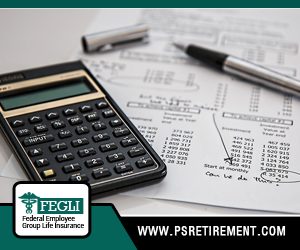
In order to keep your basic FEGLI coverage in retirement, you will also need to have five years of service. If so, you will have three options in how you may retain these benefits. These include the following:
- 75% Reduction – With this option, a reduction in coverage will begin the second month following your 65th birthday, or the second month following your retirement, whichever occurs later. Then, the coverage will decrease by 2% every month until it reaches 25% of its original amount, where it will then level out.
- 50% Reduction – With this option, you can retain 50% of your original amount of coverage. The reduction also starts during the second month after your 65th birthday, or the second month after retiring – whichever occurs later. With this option, the coverage will decrease by 1% every month until it gets to 50% of its original amount.
- No Reduction – With the no reduction option, you may retain the full amount of your FEGLI benefit.
Options for Those Not Eligible to Keep Their Benefits
If you are not eligible to continue your FEHB or FEGLI benefits, then you may still have various options. For example, with the FEHB plan, you will have an extension of 31 days of coverage at no cost to you. Following that time, you can either drop the plan altogether or convert it over to an individual contract. You may also request a Temporary Continuation of Coverage. This will allow you to continue the FEHB benefits for up to 18 months at a premium cost of 102%.
For the FEGLI plan, you will also have a no-cost 31-day coverage extension. However, after that time period has elapsed, you will only be able to either drop the coverage completely or to convert some or all of the benefit over to an individual policy and likewise pay the premium out-of-pocket.
About Bob Wiener:
Bob Wiener believes in “Working hard and always being there for (his) clients.” Working with the employees and partners of a major accounting firm for over twenty years, Bob has learned how to help even the most discerning clients work their insurance and retirement planning needs.
When Are FEDS Eligible for Retirement by Jeff Spencer
/by Jeff SpencerWhen Are FEDS Eligible for Retirement? Jeff Spencer answers the Federal Employee question
For many people, “saving for the future” means just exactly that – setting money aside for “someday.” But as the years slip by, it becomes more important to have an actual plan for retirement, and a big part of that plan includes knowing the time when you can actually separate from employment service.
If you are a federal employee, the good news is that your retirement program makes it somewhat easier to track when you can retire. For example, retirement eligibility is determined by your age, as well as the years of service that you have put in.
In many instances, employees can retire and receive an immediate retirement benefit. This refers to a benefit that begins within 30 days from the date that he or she stops working. Provided that the employee meets one of the following criteria, they would be entitled to an immediate retirement benefit:
- Age 62 with 5 years of service
- Age 60 with 20 years of service
In some cases, you may also be required to have reached the MRA, or Minimum Retirement Age, in order to receive an immediate retirement benefit. Upon meeting the MRA, you may be required to either have 10 or 30 years of service, depending on your circumstances.
The following chart outlines what your MRA would be, based upon your year of birth:
| If you were born: | Your MRA is: |
| Before 1948 | 55 |
| In 1948 | 55 and 2 months |
| In 1949 | 55 and 4 months |
| In 1950 | 55 and 6 months |
| In 1951 | 55 and 8 months |
| In 1952 | 55 and 10 months |
| In 1953 – 1964 | 56 |
| In 1965 | 56 and 2 months |
| In 1966 | 56 and 4 months |
| In 1967 | 56 and 6 months |
| In 1968 | 56 and 8 months |
| In 1969 | 56 and 10 months |
| In 1970 and after | 57 |
Source: OPM.gov
A federal employee may also be eligible for early retirement. This could be the case in the situation of an involuntary separation from service, as well as in the case of a voluntary separation such as for a reduction in the workforce or during a major reorganization.
In order to be eligible for retirement in these types of situations, an employee must either be age 50 and have put in at least 20 years of service, or be any age and have put in a minimum of 25 years of service.
When Will Your Benefits Begin?
Are far as benefits beginning, it is important to be mindful of the actual date that you retire, as well as the date that you legally attain a certain age. For example, a person actually legally becomes a given age on the day prior to his or her date of birth.1 This can be significant when choosing the date of retirement, as it could make the difference between your annuity benefits beginning the month of separation from service, or the month following.
Sources
- FEDweek (http://www.fedweek.com/reg-jones-experts-view/the-first-day-you-can-retire/)
About Jeff Spencer:
Learning about L Funds by Todd Carmack
/by Todd CarmackTodd Carmack discusses L funds and retirement
The L Funds (Lifecycle funds) became part of the TSP allocation options in August 2005. The objective of L funds is to provide a balance between risk and return combined with an employee’s future retirement year. The L Funds are designed to make life a little easier for federal employees by taking the guesswork out of trying to diversify and rebalance TSP allocations for retirement planning.
The L-funds are comprised of the six basic allocations of the Thrift Savings Plan:
G fund – government securities
F fund – government, corporate and mortgage-backed bonds
C fund – S&P 500 index fund (large cap companies of the US)
S fund – small to medium cap US companies
I fund – international stocks of more than 20 developed countries
These lifecycle funds offer both risk (exposure to stock market losses) and reward (exposure to stock market gains). The funds are designed to have greater risk in the portfolio the farther out your expected retirement date will be and a more conservative stance the closer you are to retirement. The idea is to pick the fund closest to your goal retirement date. Utilizing L funds and retirement planning can be helpful in preparing you for retirement. The funds will be rebalanced over time, going from containing higher percentages of risk (C, S, and I funds) to greater percentages of G fund as time gets closer to retirement.
Here is the current breakdown composition of the L funds:
L income – designed for those retiring in the next year or two.
G fund – 74%
F fund – 6%
C fund – 11.2%
S fund – 2.8%
I fund – 6%
L-2020 fund – retiring between 2017-2024
G fund – 50.28%
F fund – 5.72%
C fund – 24.32%
S fund – 6.48%
I fund – 13.2%
L-2030 fund – retiring between 2025-2034
G fund – 30.78%
F fund – 5.72%
C fund – 34.53%
S fund – 9.92%
I fund – 19.05%
L-2040 fund – retiring between 2035-2044
G fund – 20.43%
F fund – 5.57%
C fund – 39.8%
S fund – 12.35%
I fund – 22.20%
L-2050 fund – retiring between 2045-2054
G fund – 12.13%
F fund – 3.87%
C fund – 44.14%
S fund – 14.66%
I fund – 25.20%
These funds are rebalanced each quarter moving to a less risky mix of investment allocations with a greater percentage going into the G fund.
Source: www.opm.gov
Other Todd Carmack Articles
Social Security for FERS Employees by Todd Carmack
Understanding The Thrift Savings Plan, By Todd Carmack
Is The Pension ‘Survivor Benefit’ Best For You? by Todd Carmack
Understanding Your FEGLI Coverage, by Todd Carmack
Disclosure: For informational purposes only. Investment advisory services offered through BWM Advisory, LLC (BWM). *Due to various registration requirements concerning the dissemination of investment and insurance product and service information, we are currently required to limit access of the following pages to individuals residing in states where BWM is currently registered. Investment and advisory services available only to residents where BWM is registered or where State determined registration thresholds have not been met. Please contact BWM Advisory for a copy of their most recent ADV for Registration and additional disclosure information. Investing involves risk. Always contact your own investment advisor before making any investment decision.
The Roth TSP by Todd Carmack
/by Todd CarmackTodd Carmack talks about the Roth TSP
 Todd Carmack discusses TSP options.
Todd Carmack discusses TSP options.Having the privilege of helping so many federal employees, it amazes me just how few people are taking advantage of the Roth Thrift Savings Plan, a simply fantastic opportunity.
The Roth Thrift Savings Plan was made available to federal employees in 2012. It differs from the Traditional TSP in that contributions to the Roth TSP are made with after-tax dollars instead of pre-tax dollars. The money grows tax-deferred, similar to a Traditional TSP; however, withdrawals from the Roth TSP come out tax-free. Distributions from a Traditional TSP are taxed as income.
We are currently in a low tax rate era based on tax rates over the last one hundred years. In my opinion, the low-tax era is unlikely to last. In the 1970’s, the highest marginal tax bracket was 70%. In 2013, the highest marginal tax bracket was 39.6%.
As a result of the staggering U.S. debt and increases to the budget for Medicare, Social Security taxes may have to increase to keep pace. In the United States, someone is turning 65 years old every seven minutes, the expenses that Medicare and Social Security must absorb will increase dramatically.
Some Tax experts like Ed Slott (CPA and author) and David Walker (former Comptroller General of the United States) predict that the tax rates will have to double or our country will go bankrupt.
What does all this mean? It means that saving now, in a Roth IRA or Roth TSP, along with using other instruments like Indexed Universal Life Insurance, which could provide for tax-free loans and withdrawals in the future, is probably a financially intelligent way to produce a tax-free income for the future. You will need to wait five years from the start date of your Roth TSP to qualify for the tax-free status for distributions but considering these are your retirement dollars it would be inappropriate to use these types of accounts for short-term liquidity needs.
There are always risks (taxes are a risk, as well as the risk of putting money away in an account that has a long-term objective) but if you are interested in having a more comfortable retirement you may want to do what you can to lower your future tax bill. You may want to consider a Roth TSP as part of that equation.
*Source: Kitchen, B. & Kap, E. (2015), Wealth Beyond Wall Street.
Other Todd Carmack Articles
Social Security for FERS Employees by Todd Carmack
Understanding The Thrift Savings Plan, By Todd Carmack
Is The Pension ‘Survivor Benefit’ Best For You? by Todd Carmack
Understanding Your FEGLI Coverage, by Todd Carmack
Disclosure: BWM Advisory, LLC reserves the right to edit blog entries and delete those that contain offensive or inappropriate language. Content will also be deleted that potentially violates securities laws and regulations. Different types of investments involve higher and lower levels of risk. There is no guarantee that a specific investment or strategy will be suitable or profitable for an investor’s portfolio. All investment strategies have the potential for profit or loss. Hyperlinks on this website are provided as a convenience. We cannot be held responsible for information, services or products found on websites linked to ours. BWM Advisory, LLC is registered as an investment adviser with the SEC and only conducts business in states where it is properly registered or is excluded from registration requirements. Registration is not an endorsement of the firm by securities regulators and does not mean the adviser has achieved a specific level of skill or ability.
California to Initiate a State-Run Retirement Plan
/by AdminThe California lawmakers would probably pass a new bill in a few days in which a new state-run retirement plan would be given a nod. This plan will help all those people in California who have got no access to a retirement plan from their employer. The plan would be managed by a board that will make low-risk investments. The employers with more than 5 workers would be required to participate in the plan and the workers would automatically get enrolled in this program.

Who will Benefit from this State-Run Retirement Plan?
It is being estimated that more than 7.5 million residents of California would benefit from this state-run retirement plan because they do not have access to a good employer sponsored retirement savings plan right now. About two-thirds of the aforementioned numbers of people are employed at a business that has less than 100 workers at present.
Who will Manage the Plan?
The retirement plan would be managed by a board, the California Secure Choice Retirement Savings Investment Board that was established in 2012. It has state officials and political appointees as its staff members.
Expected Investments
It is being predicted that the state-run plan would invest in low-risk debt securities such as Treasurys until the board develops more investment options for all the participants.
The Key Details
If the plan proposal is approved by the lawmakers, all the employers who have hired over 5 workers and do not offer a retirement savings plan would be required to be a member of the state-run plan. The workers of these employers would be automatically enrolled and they will have the choice regarding opting out of the plan. It is estimated that 3 percent of the workers’ salaries would be contributed to the plan and the contribution limits would be same as those of IRAs.
The Support
The bill is supported by many people including a senior legislative representative with AARP (an advocacy group for older Americans), Sarah Gill. She believes that the bill would soon become a law. She also said that the program would pay for itself in the future and small business owners would want to give some retirement security to their employees. She added that there is bipartisan support for bills like this and the state-run retirement plan was a conservative idea which was developed by the Heritage Foundation.
DHS to Make Federal Employees’ Electronic Devices more Secure
/by AdminThe Department of Homeland Security is focused on making the mobiles and other electronic devices of the federal employees safer and secure. The department is doing so after getting a mandate from the lawmakers a few months back. The department is currently gathering data from the experts and aims to use it to identify and deal with potential threats.

Why DHS is working to Make Federal Employees’ Electronic Devices
Secure
DHS is working so hard to make the mobiles and other electronic devices safer because of the Omnibus bill that was passed by the congress in December 2015. The bill included section 401 of the Cyber security Act of 2015 which made it mandatory for DHS to carry out a study of the current mobile security methods and reveal whether these are enough to deal with the mobile security challenges.
The Aim
The aim of the study being conducted by the DHS is to identify all the threats to cyber security of federal networks and information. After the identification, the organization would develop recommendations on addressing the threats. The recommendations would be as per the industry best practices and industry standards. The organization is also supposed to create a plan that assures accelerated adoption of highly secure mobile device technology.
It is pertinent to add here that the study excludes the Department of Defense and other agencies that fall under the category of the intelligence community.
The Input
As the DHS is following the orders, it is getting assistance from experts of the Wi-Fi and cellular industries as well as the academic experts by initiating a request for information (RFI). The information needed by the DHS includes information on services, products, technologies and capabilities. The deadline for the responses is August 22, 2016. The information collected would not lead to any instant action or issuing of new contracts. The information is being gathered just for planning and market research purposes. In the RFI, the respondents are asked to identify considerations and constraints that affect the mobile and other technologies. They are also asked to give recommendations about how the situation can be improved.
The Scope
The scope of the information collected by the DHS includes not only the smartphones and tablets used by the federal employees. It also includes operating systems, mobile apps and other embedded components of mobiles like enterprise mobile services and infrastructure, baseband radios and wireless networks.
Federal Employee Retirement Eligibility by Kevin Wirth
/by Kevin WirthKevin Wirth explains retirement eligibility for Federal Employees
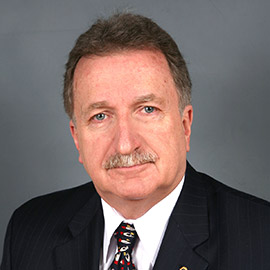 Kevin D. Wirth – Retirement Expert
Kevin D. Wirth – Retirement ExpertFor many people, “saving for the future” means just exactly that – setting money aside for “some day.” But as the years clip by, it becomes more important to have an actual plan for retirement, and a big part of that plan includes knowing the time when you can actually separate from employment service.
If you are a federal employee, the good news is that your retirement program makes it somewhat easier to track when you can retire. For example, retirement eligibility is determined by your age, as well as the years of service that you have put in.
In many instances, employees can retire and receive an immediate retirement benefit. This refers to a benefit that begins within 30 days from the date that he or she stops working. Provided that the employee meets one of the following criteria, they would be entitled to an immediate retirement benefit:
- Age 62 with 5 years of service
- Age 60 with 20 years of service
In some cases, you may also be required to have reached the MRA, or Minimum Retirement Age, in order to receive an immediate retirement benefit. Upon meeting the MRA, you may be required to either have 10 or 30 years of service, depending on your circumstances.
The following chart outlines what your MRA would be, based upon your year of birth:
| If you were born: | Your MRA is: |
| Before 1948 | 55 |
| In 1948 | 55 and 2 months |
| In 1949 | 55 and 4 months |
| In 1950 | 55 and 6 months |
| In 1951 | 55 and 8 months |
| In 1952 | 55 and 10 months |
| In 1953 – 1964 | 56 |
| In 1965 | 56 and 2 months |
| In 1966 | 56 and 4 months |
| In 1967 | 56 and 6 months |
| In 1968 | 56 and 8 months |
| In 1969 | 56 and 10 months |
| In 1970 and after | 57 |
Source: OPM.gov
A federal employee may also be eligible for early retirement. This could be the case in the situation of an involuntary separation from service, as well as in the case of a voluntary separation such as for a reduction in the workforce or during a major reorganization.
In order to be eligible for retirement in these types of situations, an employee must either be age 50 and have put in at least 20 years of service, or be any age and have put in a minimum of 25 years of service.
When Will Your Benefits Begin?
Are far as benefits beginning, it is important to be mindful of the actual date that you retire, as well as the date that you legally attain a certain age. For example, a person actually legally becomes a given age on the day prior to his or her date of birth.1 This can be significant when choosing the date of retirement, as it could make the difference between your annuity benefits beginning the month of separation from service, or the month following.
More from Kevin Wirth
Getting Started Early with a Successful Retirement by Kevin Wirth
Sources
- FEDweek (http://www.fedweek.com/reg-jones-experts-view/the-first-day-you-can-retire/)
OPM Creates Strategies to Retain Cyber Security Federal Employees
/by AdminAs OPM and other federal agencies are facing some problems in hiring and retaining federal employees who are experts in cyber security, OPM has created the Federal Cybersecurity Workforce Strategy to deal with the problem. The strategy aims to increase the number of cyber security personnel, not only at the government, but also at overall U.S. workforce.

The Aim of Strategy to Hire Cyber Security Federal employees
OPM Director, Beth Cobert recently announced that the strategy was created to ensure that more federal cyber experts are hired and retained as they can strengthen the security of federal systems, networks, and assets. She also added that cyber security is a shared responsibility of the leadership, employees, private industry, contractors as well as the American people.
OPM has outlined four core strategies to increase the cyber workforce at all levels. The strategies are mentioned below.
Education and Training
The first strategy includes offering a CyberCorps Scholarship for Service program and communicating with the universities regarding their resource and teaching needs. This strategy also proposed funds of $62 million to enhance cyber security education.
Better Hiring
OPM is also focused on hiring the best talent by streamlining the existing hiring processes, focusing on diversity outreach and searching for opportunities to build a cyber security team as a part of the Presidential Management Fellows program.
Retaining the Employees
OPM aims to enhance the retention of cyber talent by creating transparent career paths and developing a government-wide cyber orientation program that promotes sharing of information.
Seeking the Workforce Needs
The cyber security workforce needs of every agency would be identified by making use of the National Cybersecurity Workforce Framework that points out identifies 31 discrete specialty areas within cyber security workforce. The framework was created by National Initiative for Cybersecurity Education (NICE) partner agencies.
The Success Factors
Cobert also stated that these changes would be implemented over time and the long-term success of these strategies would depend on attention, resources, and innovation from all levels of government. She also added that the initiatives mentioned in the strategy would play a key role in establishing, growing and strengthening a pipeline of cyber security into the future. It is being hoped that this time OPM would succeed in hiring and retaining the best federal employees who specialize in cyber security and have the caliber to protect government from advanced cyber attacks.
Does the Federal Employees’ Retirement System Have a Downside? by Nelson Secretario
/by AdminNelson Secretario investigates the potential downsides of the Federal Employees Retirement System (FERS)
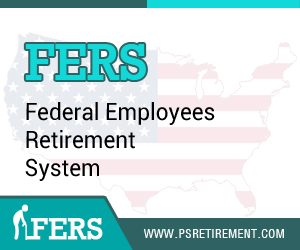
If you’re a federal employee who is enrolled in FERS (the Federal Employees’ Retirement System), then you are probably well aware of the many benefits that this program has to offer as far as saving for the future.
For example, as soon as you have reached your minimum retirement age – which ranges between 55 and 57, this program allows you to retire using an immediate, unreduced annuity if you have put in 30 years of service. In some cases, an employee may even be able to retire at a younger age, provided that they have had either 20 or 25 years of service.
However, while working for the government may allow you to leave the world of employment at a younger age than many other professions can, there can also be some drawbacks to relying solely on the FERS program as your only source of retirement income. Some of these can include:
- Cost-of-Living Adjustments – If you do happen to retire prior to age 62, you won’t be able to receive a cost-of-living adjustment on your annuity (unless you are a disabled retiree or a survivor annuitant). Therefore, you could essentially go for several years receiving the same amount of income, while the prices of goods and services that you’re paying for continue to go up. And, if you are receiving a special retirement supplement (SRS), the funds from this source do not ever receive a cost-of-living adjustment.
- Possible Benefit Reduction – You may also be subject to having your benefit amount reduced, based upon when you actually retire. For instance, the MRA+10 (Minimum Retirement Age) program that is a part of FERS, can allow you to retire at any age, as long as you have at least ten years of service. However, if you do end up retiring early, the amount of your annuity will be reduced by 5% for each year that you are under age 62. So, depending on just how early you leave the workforce, you could see a significant reduction in your retirement income amount.
With this in mind, it can be a good idea to have other retirement income sources available to you that can be used to supplement your FERS benefits. That way, you will be able to both fill in the “gaps” that are left between your income from your FERS retirement income and your living expenses, and you can also provide yourself with a way to compensate for the increased income that you will need in the future.
More From Nelson Secretario:
Finding Financial Advisors for Federal Employees by Nelson Secretario
Higher FEGLI Rates in 2016 by Kevin Wirth
/by Kevin WirthKevin Wirth discusses the Higher FEGLI rates in 2016
If you’re enrolled in the FEGLI (Federal Employees’ Group Life Insurance) program, either as an employee or a retiree, you may have recently noticed that your premiums have increased. This is because the FEGLI plan has changed its premiums for those who are currently enrolled, effective as of the first pay period of 2016.

Although the rise in cost is considered to be “slight” for older enrollees (and in fact the cost for those who are in the younger age brackets has actually gone down), the increase in premium can nevertheless be difficult for some who have not had a pay raise lately, or who are living on a fixed income.
Yet, if you’re planning to cancel your FEGLI coverage due to the higher premium, you may want to consider all of your alternatives prior to moving forward, as well as the financial consequences of going without this important financial protection.
For example, most people carry life insurance so as to ensure that their loved ones will not have to endure some type of financial hardship upon their passing. With that in mind, ask yourself what type of debt you may be leaving behind, such as:
- Unpaid mortgage balance
- Personal loans
- Auto loan(s)
- Credit card debt
- Any business loans or debt
You may also have additional financial needs to cover, such as a surviving spouse and / or dependent’s ongoing income – especially if retirement income sources will be reduced or eliminated upon your passing.
In addition, today, even the cost of basic final expenses can exceed $9,000 in many areas of the country now. This is especially the case when factoring in elements such as a burial plot, head stone, transportation, and obituary notices.
So, while the cost of your FEGLI premium may be rising, the cost of going without life insurance protection could be a great deal more. If this particular coverage is too cost prohibitive, though, there may be other options available in terms of an individual life insurance policy or a final expense life insurance plan.
More From Kevin Wirth:
Getting Started Early for a Successful Retirement by Kevin Wirth
Combination of Strategies is the best bet for Steady Retirement Benefits
/by AdminPeople who are looking for steady retirement benefits income cannot rely on a single strategy, says a recent study. The study also stated that the expectations of retirees are very high and contradictory. It pointed out the strategies that offer mental peace to retirees. It also stated that all strategies have their own side effects and none of them can outperform.
The Study Judging the Strategies for Steady Retirement Benefits
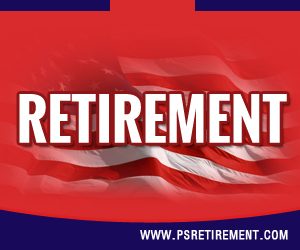
The study that examines the strategies was conducted by the TIAA Institute. It studied three strategies opted by retirees. The list includes a systematic withdrawal, a guaranteed lifetime withdrawal benefit, and a partial variable immediate annuity. The study has concluded that none of these can offer long term satisfaction to the retirees. A combination of all these strategies might be the answer.
The study also revealed that the retirement income security can be enhanced depending on the withdrawal strategies only when the participants start to withdraw the benefits. But, the goals of every participant can affect the strategy that’s offering the best results for a particular situation.
High Expectations
The study also revealed that most retirees look for many things when they get retired. They want strategies that offer inflation protection, retirement security, asset growth, liquidity and the potential for an estate. All these goals might conflict with each other which make it impossible to satisfy a retiree with a product for the long term.
Peace of Mind
The guaranteed lifetime withdrawal benefit strategies and partial variable immediate annuity strategies perform better when it comes down to offering peace of mind to the retirees. The systematic withdrawal strategy allows for greatest flexibility in the management of retirement assets by the retiree.
The Side Effects
The study has also exposed the fact that there is no strategy that has no side effects. Some of the side effects are high fees that are a part of guaranteed lifetime withdrawal benefits, loss of liquidity that comes by adopting partial variable immediate annuity strategies and less retirement income security which is a part of systematic withdrawal strategies
No Strategy Outperforms
The study also compared the three strategies by making use of the historical monthly returns data. It announced that though many people use their conventional wisdom and put their faith in a guaranteed lifetime withdrawal benefit product strategy because it allows a guaranteed minimum amount of lifetime income, no strategy is a clear winner and can assure steady retirement benefits.
Calculating the FERS Supplement by Paul Kalra
/by Paul KalraA Lesson on Calculating the FERS Supplement by Paul Kalra
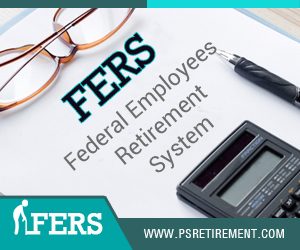
There are many FERS annuitants who are able to retire prior to the age of 62, and who are eligible for the SRS (Special Retirement Supplement). You can meet such requirements if you have retired:
- Following the MRA (Minimum Retirement Age) after putting in at least 30 years of service;
- At age 60 with at least 20 years of service; or
- Upon either an early voluntary or an involuntary retirement at age 50 after having 20 or more years of service, or at any age after at least 25 years of service, when it has been determined that your agency is undergoing a major reorganization, a RIF (reduction in force) or a transfer of function. (In this situation, you will not receive the SRS until you have reached your Minimum Retirement Age).
As Social Security retirement benefits cannot be received until you reach at least the age of 62, the Special Retirement Supplement can help you with bridging your income until the time that these benefits are paid out.
In order to determine roughly how much you will receive from your SRS, you should first obtain an estimate of benefits from the Social Security Administration. Each year, Social Security provides a statement of estimated benefits, so you will be able to easily find the dollar amount of estimated benefits that you are likely to be receiving at age 62.
Next, take this dollar amount and multiply it by your years of FERS service (rounded off to the nearest whole number). Once you have done so, divide this figure by 40. This will provide you with the approximate amount of FERS supplement that you should receive.
As an example, if the amount of Social Security benefit that you are estimated to receive at age 62 is $5,000 and you have put in 30 years of FERS service, then the calculation will be as follows:
$5,000 X 30 / 40 = $4,500
In running this calculation, your estimated FERS Supplement benefit would be approximately $4,500 per month. It is important to note, however, that certain situations such as obtaining outside employment following retirement could have an impact on the amount of benefit that you ultimately receive.







